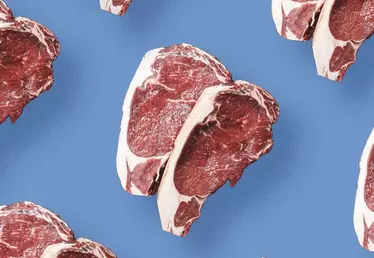

Hero banner custom title
What’s the environmental impact of imitation meat?
3 min
Fake meat made in factories from multiple ingredients is generally better, in animal welfare or calorie intake terms, than authentic meat – but questions remain as to how environmentally friendly it really is.
At first glance, it seems obvious that eco-minded consumers can cut their carbon footprint by replacing beef steak with a plant-based alternative, if only because of the former’s particularly high environmental footprint. Beef production not only consumes huge quantities of water but it also contributes to deforestation, impoverishing global flora and diminishing the Earth’s natural capacity to capture carbon. On top of this, bovine flatulence releases a great deal of methane into the atmosphere, with the FAO estimating that livestock as a whole is responsible for something like 14.5% of total global greenhouse gas emissions.
The IPCC (Intergovernmental Panel on Climate Change) recommends a reduction in meat consumption, with several of its experts opining that switching to a vegetable-based protein diet is the best way of going green. Moreover, nowadays meat lovers daunted by this prospect enjoy a variety of plant-based meat options helping them to inch towards semi-vegetarianism or even outright veganism.
Fake or imitation meat
In recent years, vegan products of this kind have started to feature prominently on supermarket shelves (and even on leading fast-food chains’ menus). Unlike their soy-based veggie burger predecessors, they are made from vegetable proteins giving them a texture and taste that is very similar to actual meat, including a residual taste of tallow that they get by cooking with oil made from coconuts or similar sources. Further authenticity is achieved using other synthetic ingredients that manufacturers have been developing, starting with heme, which comes from mixing genetically modified yeast with soybean leghemoglobin genes. The end result is a product that both tastes and looks like rare meat.
Plant-based substitutes are a new and rapidly expanding industry that is expected to account for 10% of the global meat market by the year 2030, versus a mere 1% today. Top brands in the sector include Beyond Meat, a company whose product designs are mainly pea protein-based, as well as Impossible, which relies more on soy proteins.
The environmental effects
The companies in question tend to highlight their lesser footprint and like producing studies to substantiate this claim.
Before changing its burger recipe, for instance, Beyond Meat commissioned a report asserting that its products generate 90% lower greenhouse gas emissions - and require 46% less energy - than an equivalent quarter pound of authentic U.S.-grown beef.
Although plant-based alternatives seem ideal on paper, it should also be remembered that they are ultra-processed products whose production consumes significant quantities of energy. Marco Springmann, an Oxford University researcher specializing in food-related issues, has estimated that this new product class is apt to emit five times more CO2 than raw legumes like soybeans, which are truly low carbon in nature.
Springmann has found that plant-based steaks generate between 2.5 and 5 kg of CO2 per kilo, depending on which production processes are being used. This compares with red meat emissions of between 20 and 50 kg, or 7 to 11 kg for poultry. Having said that, “Some consumer surveys in high-income countries indicate that these products can lead to greater consumption than would otherwise be the case. The problem is then that when someone eats, for instance, more plant-based poultry than the authentic variety, they aren’t necessarily reducing their footprint. Quite the contrary”. Springmann concludes that it is better – ecologically, financially, but also health-wise - to consume plant-based products in their unprocessed form.
In short, imitation meat is not a silver bullet in the battle against global warming. It can, however, be a useful tool in people’s transition to a vegetarian diet. And despite the aforementioned constraints, it does remain somewhat environmentally friendlier than animal meat.
Indeed, a study published in the journal Nature has found that if just 20% of all the beef and lamb consumed worldwide were to be replaced by microbial proteins, deforestation and agriculture-related CO2 emissions could be halved by the year 2050.











